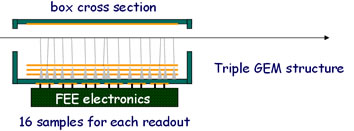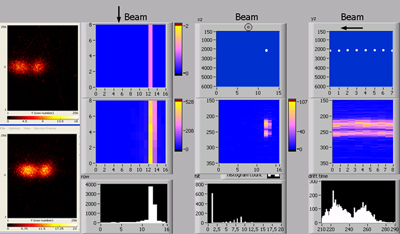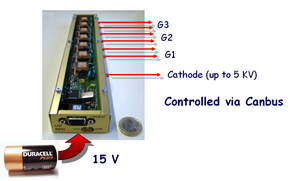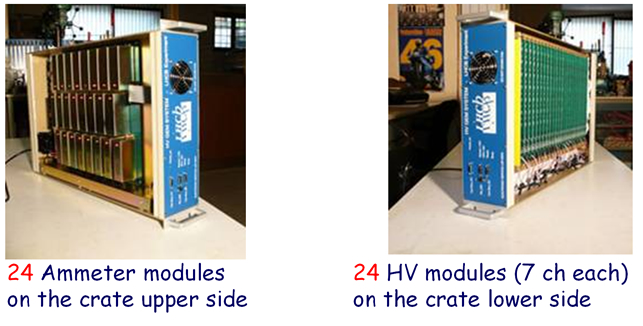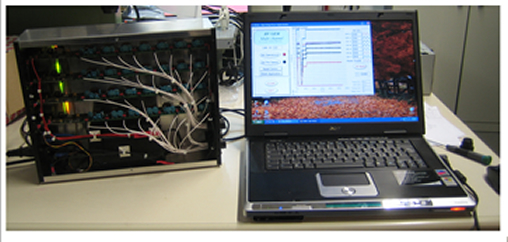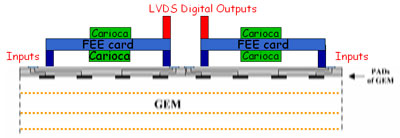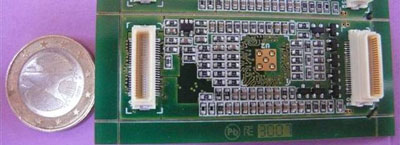Time Projection Chamber with GEM
- Details
- Last Updated: Friday, 26 August 2016 18:47
A compact time projection chamber (TPC) has been designed, built and tested, for beam monitoring at the Dafne Beam Test Facility (BTF). The Facility provides electron and positron beams in a wide range of intensity, from single particle up to 1010 particles per pulse, and energy, from a few tens of MeV up to 800MeV .
|
|
The main idea in developing this detector is to place a standard triple GEM detector parallel to the particle beam and to use it as a time projection chamber, by enlarging the drift gap.In this way the depth of the material crossed by the particle is particularly small (less than 0.2%X0) and the beam position measurement could be more precise, in the z coordinate along the drift O(100 microns), by measuring the time of arrival of the electron clusters. | |
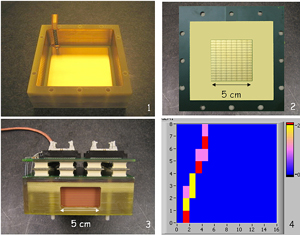 |
The 128 readout pads, as shown in the picture below, have a dimension of 3x6 mm2 organized always in a matrix 8x16 pads but with a total active area of 5x5 cm2. With this pattern readout, the track z position is measured 8 times per event with a final precision of O(50 micron) and a good resolution O(1mm) is obtained in the other two coordinates X and Y.
The TPC, working without a magnetic field, has been switched on with a gas mixture Ar CO2 (70/30) at a Gain 104: just opening a random time gate of 8 ms, clean cosmic tracks like in the picture can be seen on the online display through the scalers readout.
|
|
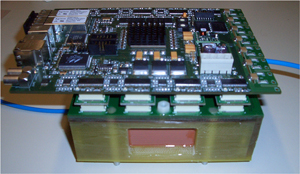 |
In order to have a more flexible system, a new mother board has been designed and realized with an FPGA, that will be able to analyze the LVDS signals coming from the FEE board, both with scalers and multihit TDC with a resolution of 2 ns, sufficient to record the time drift of electrons along the 4 cm drift. The high rate capability of GEM technology allows the use of this monitor not only for single tracks events but also for multi particle beam. |
| Performances | ||
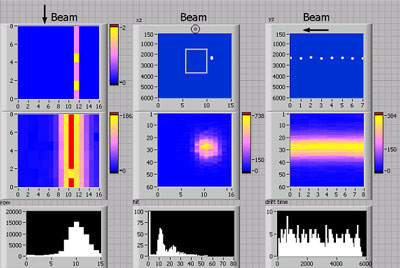 |
|
The performances of this detector have been measured at BTF in Frascati. In this picture is visible the online monitor. On the first row the three views of one electron 500 MeV . On the second row the history plots of fews minutes. On the third row :
|
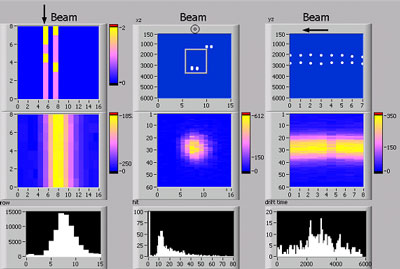 |
In this picture is visible the online monitor. On the first row the three views of two electrons 500 MeV . On the second row the history plots of fews minutes. On the third row :
|
|
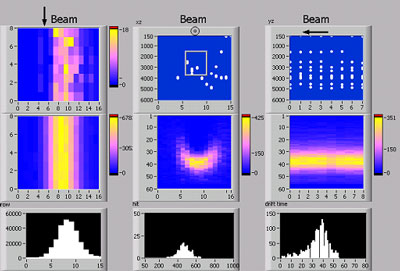 |
On the first row the three views of 1000 electrons 500 MeV in a bunch of 10 ns. On the second row the history plot of fews minutes. On the third row :
|
|
| This viedo shows the online monitor during the BTF test when a beam of one or two electrons goes through the chamber | ||
|
|
TPC GEM as tracker monitor for channeling experiment. Recently this compact TPC has been used at H8 test beam at CERN for proton channeling studies. The chamber was placed 50 meters downstream the crystal. On the right it's possible to see the two views (side and front) of the main and the channeled beam. The two beam are separated by 3.6 mm. On the left the two beams images taken with two medipix with 50x50 micron2 pixels. |


